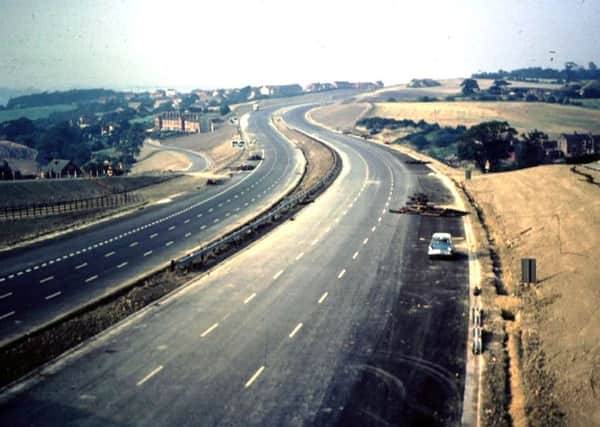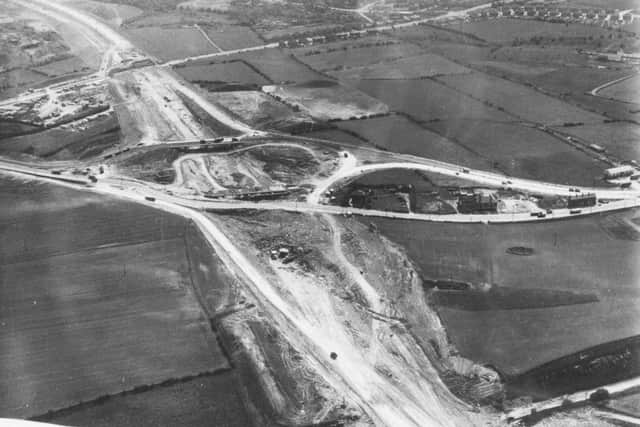The HS2 of its day: 50 years of the M1 in Yorkshire


The 50th anniversary of the completion of Yorkshire’s first motorway is the story of a north-south transport divide with parallels to the politics of today.
Work had begun on the M1 in 1958 and the section from Watford to Rugby had opened to traffic the following year. But the extension northwards – just like the one to the current HS2 rail development – had to wait. By the time it arrived, the number of cars on the roads had more than doubled, from 5m to 11m.
Advertisement
Hide AdAdvertisement
Hide Ad“The North still lags behind,” said Colin Bamford, an emeritus professor at Huddersfield University, who compiled a study of the impact of motorways in Yorkshire in the 1970s and who chaired a conference on the Northern Powerhouse this week.


“Yorkshire is still below the north west on transport spending, let alone London and the south east. We’ve still a fair way to go.”
But if the similarities with HS2 – whose extension to Leeds will not open until up to seven years after the Midlands section – are striking, so are the differences, Prof Bamford said.
“There was no opposition at all to the route. People took the view that it all was wonderful and there was impatience to get it finished and frustration that it took as long as it did.”
Advertisement
Hide AdAdvertisement
Hide AdBritain, and Yorkshire in particular, had been “late to the game”, he added. “People had been to France and Germany and seen what was happening there. In Britain there was nothing until the Preston bypass opened in 1957, on what’s now the M6.”
In Leeds, the excitement was palpable as the opening day of the M1 approached. It’s new “motorway city” slogan was everywhere – even on the city’s Royal Mail postmark. Its planners had built the new city centre with cars in mind, not public transport, and the tunnels of the inner ring road were seen as symbols of the coming decade.
“When you first used the M1 you could tell within a minute or two how long the journey would take,” Prof Bamford said. “The volume of traffic was very low. That’s the biggest difference.”
But the landscape was not easily tamed. In August 1967, at Durkar, near Wakefield, four men were killed and three injured when a 60ft section of a bridge collapsed. It was supposed to carry the road over the River Calder.
Advertisement
Hide AdAdvertisement
Hide AdAlan Burnley, a road worker at the site, recalled in 2009: “Accidents were quite common and I think construction was deemed to be more dangerous than mining back then.
“Another friend of mine was electrocuted when a pipe he lifted touched overhead cables.”
The transformation the road brought to the region’s economy, at a time when traditional textile jobs in the West Riding were disappearing, was incalculable, Prof Bamford said. “It acted as a magnet for new developments, particularly when you look around Leeds and Wakefield.”